The Malay world extends in an arc from southern Thailand, through the Malay Peninsula and Sumatra, and on to Java, Sulawesi and the southern Philippines. This archipelago has been the most easterly frontier of Islam for the past 500 years. Lush as the tropical land itself, the art of the region is a synthesis of many traditions. For centuries, Southeast Asia was part of the greatest trading route the world had ever seen, surpassing the Silk Road for quantity and variety. It was a meeting place for different Asian empires, as well as the new trading powers that emerged from the West. Central to these global influences was Islam, guiding a culture of restrained opulence which, like the Islamic art of China, is only now being explored by art historians.

Natural forms abound in the Islamic art of Southeast Asia. Subjects such as stylised plants, fruits and clouds are found in a wide variety of media. On textiles, these are often taken to a degree of abstraction that puts them in the realm of pure geometry. Parallel with this is the use of calligraphy, to give an even more visible expression of religious belief. The material from which these cloths were made gives them an added grandeur. Gold thread and elaborately tie-dyed silk reflect the esteem in which they were originally held.
An art of Southeast Asia which receives less attention than textiles is Qur’anic manuscripts. These are immediately identifiable by their vegetal scrolls, trailing tendrils and other floral motifs, showing once again the regional debt to nature. The palette is also exceptional, resonating with a contrast of red, yellow and black, embellished with gold on manuscripts for the royal courts. The collection at IAMM is exceptionally well represented by Qur’ans from the East Coast of the Malay Peninsula, an area distinguished in the past for its Islamic scholarship and calligraphic expertise.
Craftsmanship in wood and metal is another tradition for which the Malay world was once renowned. The world of nature provided inspiration to beautify objects as mundane as a child’s ‘modesty plate’, or as hallowed as a wooden prayer screen or Qur’an box. Liveliness of concept and quality of execution were very much part of Malay artisanship. This was especially true for objects of hospitality, often expressed in the form of exquisite silver betelnut sets or elegantly proportioned brass trays.

Metalworkers of the highest ability were involved in the production of weapons that ranged in size from ladies’ daggers of miniscule proportions to massive throwing spears. Most venerated of all is the kris. These daggers with a distinctively wavy blade symbolise the warrior spirit of Southeast Asia. Whether intended for ceremonial or practical use, they have always been regarded with awe. Astonishing feats are still attributed to kris, which are believed capable of everything from weeping tears to flying unaided to kill their victims. Beyond doubt is the quality of their manufacture. In addition to blades crafted with devotion are superbly executed hilts and sheaths.














